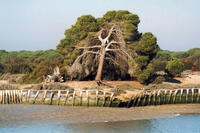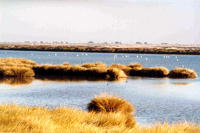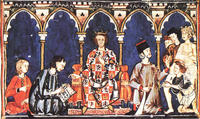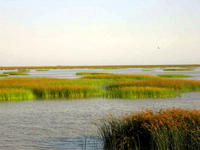You are in: Europe -> Spain -> Doñana National Park, and traditional search or Image Gallery will yield results of this site only
Doñana National Park
| Site number: | 685 |
|
| Type of site: | Natural | |
| Date: | - | |
| Date of Inscription: | 1984, 2005 | |
| Location: | Europe, Spain, Provinces of Huelva and Sevilla, Autonomous Community of Andalusia | |
Up to 75 images are shown here. Click on each for more details or on Image Gallery for more images.
| Description: | Andalusia’s Doñana National Park resides on the right bank of the Guadalquivir River right at its estuary on the Atlantic Ocean. It is noteworthy for its immense biotope range, particularly lagoons, marshlands, fixed and mobile dunes, scrub woodland and maquis. One of the Mediterranean region’s largest heronries, the site is the wintering site for more than 500,000 water fowl each year, and serves as a home to five threatened bird species. --WHMNet paraphrase from the description at WHC Site, where additional information is available. | |
| Doñana National Park (Spanish: Parque Nacional de Doñana), also called Coto de Doñana, is a national park and wildlife refuge in southwestern Spain. It is located in Andalusia, in the provinces of Huelva and Sevilla, and covers 543 km², of which 135 km² are a protected area. The park, whose biodiversity is unique in Europe, contains a great variety of ecosystems and shelters wildlife including thousands of European and African migratory birds, fallow deer, Spanish red deer, wild boar, European badger, Egyptian mongoose, and endangered species such as the Spanish Imperial Eagle and Iberian Lynx. The park and its highly sensitive ecology were threatened in 1998 by a massive spill of metallic waste from a mine reservoir into the Guadiamar River, which flows through the park; however, the spill was diverted into the Guadalquivir River, reprieving the park. It is an area of marsh, shallow streams and sand dunes. --Wikipedia. Text is available under the Creative Commons Attribution-ShareAlike License. | ||
| Source: | http://whc.unesco.org/en/list/685 | |
| Reference: | 1. UNESCO World Heritage Center, Site Page. | |

















